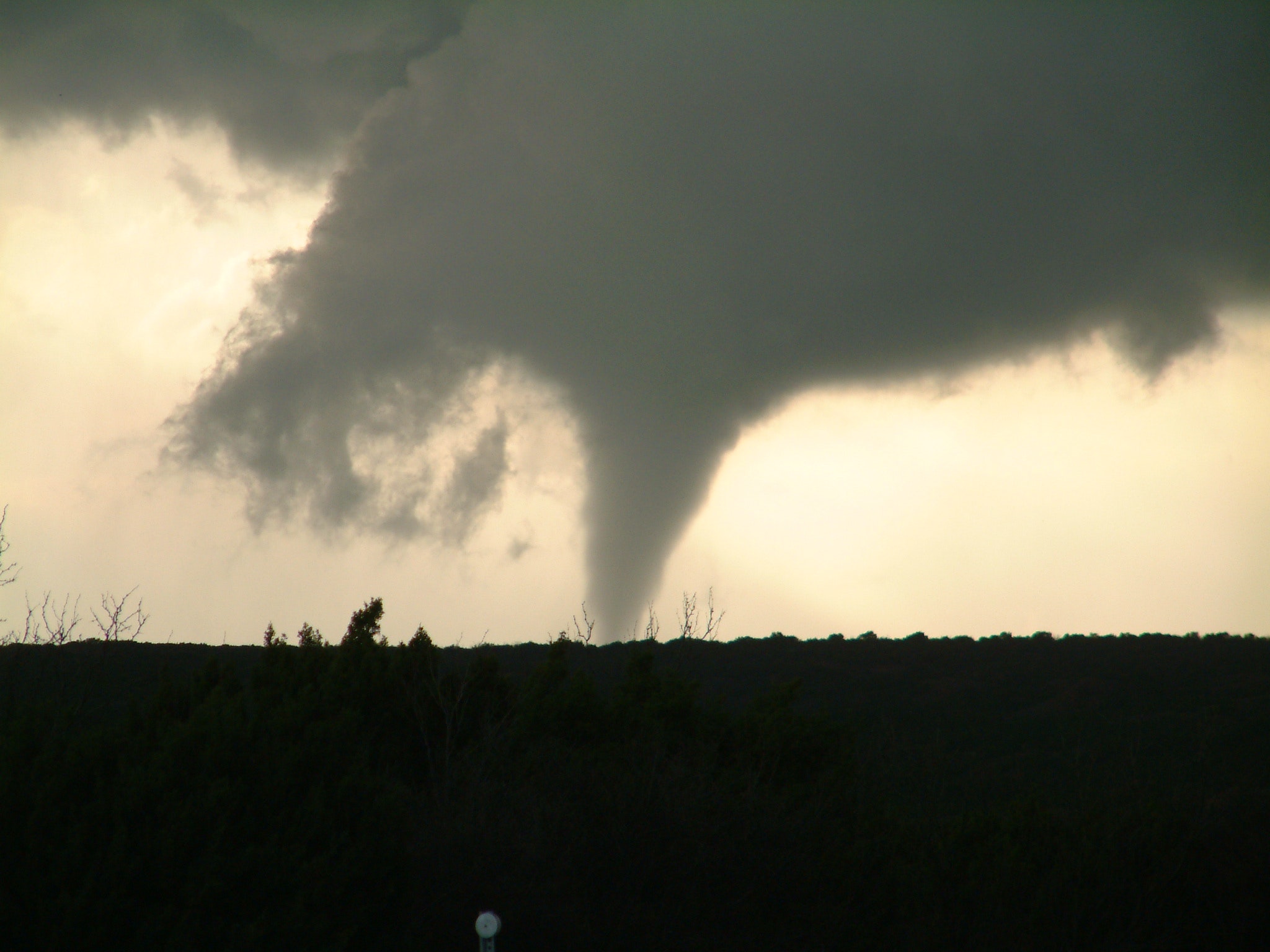What Does the Inside of a Tornado Look Like?
Tornadoes are one of nature’s most awe-inspiring and feared phenomena. With their immense power and destructive force, it’s no wonder that people are curious about what goes on inside these swirling columns of air. So, what does the inside of a tornado look like? Let’s delve into the heart of these powerful storms and explore the fascinating details of their inner workings.
When a tornado forms, it starts as a rotating column of air, extending downward from a thundercloud. As the tornado touches the ground, it begins to gather debris, dust, and water vapor, creating a swirling mass of clouds, dust, and flying objects. This is what gives tornadoes their characteristic appearance when viewed from the outside.
**But what about the inside? Is it as chaotic and destructive as it appears?**
The Eye of the Storm
Contrary to popular belief, tornadoes do not have a calm “eye” like hurricanes. Instead, tornadoes consist of a central region called the “eye of the storm,” which is relatively calm and devoid of the violent winds that surround it. Within the eye of a tornado, you would experience a temporary reprieve from the deafening roar and extreme winds. However, it’s crucial to note that this calm region is small and short-lived, as the tornado continues to move and evolve.
Rapidly Rotating Winds
Just outside the eye of the tornado lies the most destructive part of the storm, known as the “wall cloud.” This is where the strongest winds converge and spiral rapidly inwards, creating the devastating force that tornadoes are notorious for. Inside this region, wind speeds can reach incredible velocities, often exceeding 200 miles per hour (322 kilometers per hour). These ferocious winds can effortlessly tear apart buildings, uproot trees, and toss vehicles around like toys.
Within the wall cloud, the winds exhibit a distinct rotary motion. They rotate counterclockwise in the Northern Hemisphere and clockwise in the Southern Hemisphere due to the Earth’s rotation. This rotation gives tornadoes their characteristic shape and sets them apart from other types of severe storms.
The Dark Center
As you move closer to the center of the tornado, you may encounter an eerie darkness. Dust and debris are continually being lifted into the air, reducing visibility and casting a murky shadow over the surroundings. This darkness, combined with the howling winds, creates an incredibly intense and unsettling atmosphere.
Rapidly Changing Dynamics
Inside a tornado, the atmospheric conditions can change rapidly and erratically. Wind speeds can vary dramatically over short distances, resulting in a turbulent and unpredictable environment. These dynamic changes make it extremely challenging for scientists and meteorologists to gather data and study tornadoes up close. It also adds to the danger and unpredictability of being inside a tornado.
Debris and Destruction
The inside of a tornado is filled with debris and objects flying at high speeds. Trees, branches, rocks, cars, and even entire buildings can be lifted into the air and whirled around within the vortex. This debris contributes to the destruction and danger associated with tornadoes, posing a significant threat to life and property.
Overall, the inside of a tornado is a chaotic and dangerous place. Filled with swiftly rotating winds, debris, and destruction, it’s an environment that should be avoided at all costs. While our fascination with tornadoes is understandable, it’s crucial to prioritize safety and take necessary precautions when faced with these powerful storms.
Frequently Asked Questions
What causes the rotation inside a tornado?
The rotation inside a tornado is primarily caused by wind shear, which refers to the change in wind direction and speed with height. As air at different altitudes moves at varying speeds and in different directions, it sets up a vertical rotation within the thunderstorm. This rotation then extends downward, forming the rotating column of air that characterizes a tornado.
Are tornadoes always visible?
No, tornadoes are not always visible. In fact, most tornadoes are obscured by rain, dust, or darkness, making them difficult to see. However, when a tornado picks up debris and condenses moisture, it becomes visible as a swirling mass of clouds, dust, and flying objects.
How long do tornadoes last?
The lifespan of a tornado can vary greatly, ranging from a few seconds to several hours. On average, tornadoes last for about 10-15 minutes, but some tornadoes can persist for much longer. The duration of a tornado depends on various factors, including its size, intensity, and the interaction with the surrounding weather conditions.
Can tornadoes change direction?
Yes, tornadoes can change direction. While most tornadoes move in a generally straight path, they can change direction suddenly and erratically due to the influence of the storm’s internal dynamics and winds. These changes in direction contribute to the unpredictability and danger associated with tornadoes.
Final Thoughts
The inside of a tornado is a maelstrom of swirling winds, debris, and destruction. While our curiosity about the inner workings of these powerful storms is natural, it’s essential to remember that tornadoes are highly dangerous and life-threatening. Understanding the dynamics and characteristics of tornadoes can help us appreciate their power and take necessary precautions to stay safe. If ever faced with a tornado, seek shelter immediately and follow the guidance of local authorities to prevent harm and ensure your well-being. Stay safe, and remember that no photograph or video is worth risking your life.
